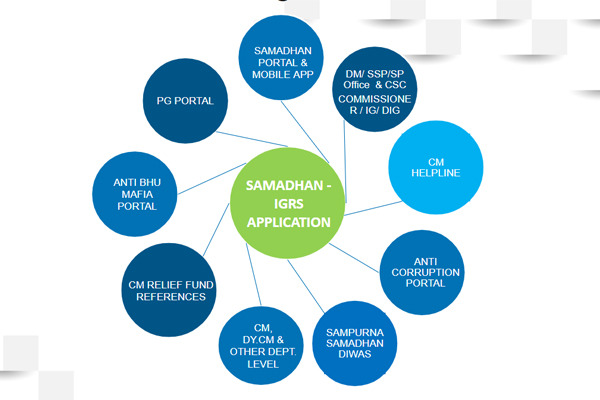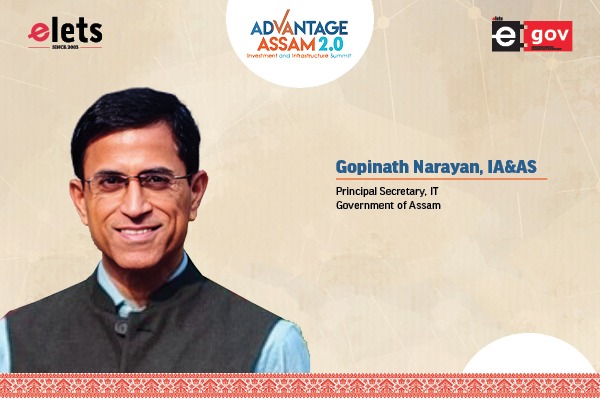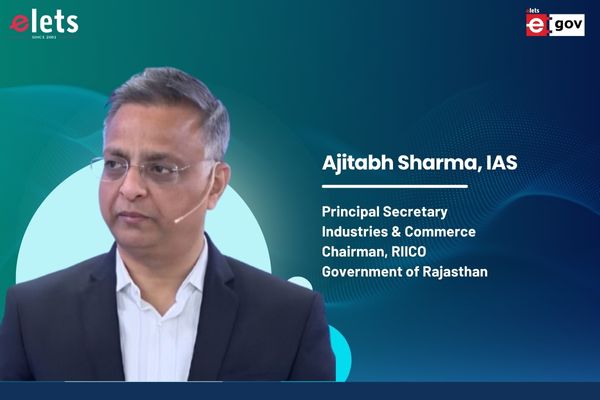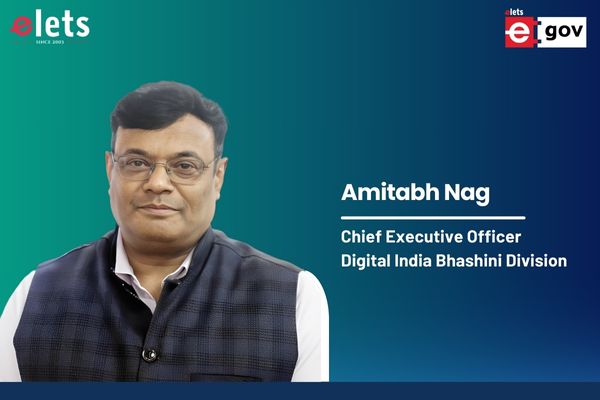
India has been heading with leaps and bounds in improving e-governance. And, rising technology-powered solutions and systems are evident of the fact. One such system implemented by Uttar Pradesh is ‘Samadhan’ – Integrated Grievance Redressal System (IGRS). Throwing light on the system and its implementation, Andra Vamsi, Collector and District Magistrate, Jhansi interacted with Arpit Gupta of Elets News Network (ENN).
-
Sir, please give an overview of the ‘Samadhan’ – Integrated Grievance Redressal System (IGRS) also known as ‘JANSUNWAI’.

JANSUNWAI (IGRS) is an integrated web-based application system which brings all grievance redressal mechanisms to one platform. Also, the system enables instant and easy communication between the concerned Departments/Officers of the state and citizens resulting in the speedy redressal of their grievances from anywhere and at any time (24 x 7). Moreover, it provides facility for submission of grievances online by the aggrieved citizen as well. The key stakeholders of the project include the Ministry of Electronics and IT (MeitY), National Informatics Centre (NIC), Government of Uttar Pradesh, Local governments in the state, and Citizens.

We can divide the implementation of the IGRS on the basis of two perspectives that are from the paradigm of a citizen aggrieved and from the view of the department/office working for redressal of the grievance.

IGRS from Citizens’ Perspective

The implementation of such a system which is based on a digital platform is definitely more transparent in nature and hence increases the trust of citizens on government. Also, the system is efficient and effective in the functioning and provides a quality resolution of the grievance within the defined timeframe which further nullifies any scope of leaving citizens unsatisfied. Further, it reduces the cost (direct cost and time, travel & opportunity costs) of filing grievances manually in a traditional manner as done before.
IGRS from Officers’ Perspective
With the implementation of the IGRS, there is a reduction seen in effort and time required for management and redressal of grievance at all levels of the Government of Uttar Pradesh, unlike the traditional manner. Further, the digital system has resulted in enhancing the focus of public servants on the resolution of grievance by offering rewards and recognition as well as a streamline flow of work. This has also enabled officers to provide better inputs in policy-making for a reduction in a region or domain-specific grievances.
-
As per you, what are the key benefits of the IGRS system? Also, please throw some light on what all portals have been integrated under the system?
Since the system has been rolled out and put to practice, there are various benefits which have surfaced with time. With such an effective system in place for the citizen grievance redressal, this increases morale among the citizens and the satisfaction levels of the citizens with the service has been on the rise.
Also Read: Jhansi all geared to handle COVID-19 outbreak: Andra Vamsi
Another major advantage of IGRS is that it is a single web portal for all types of grievances which saves not only the time but also the cost and efforts of the citizens. Henceforth, it has posed as an efficient and effective grievance redressal system. The system is also capable of de-duplication of complaints by tagging up duplicate references which result in boosting up the efficiency of government departments. It is a simple and effective gateway for online lodging and monitoring of grievances.
There are various platforms that have been integrated with the IGRS for making it an inclusive system and simplifying the grievance redressal for people. The various channels integrated with the IGRS are:
-
The Hon’ble Chief Minister/Deputy CM and other ministerial offices
-
District Magistrate (DM)/Senior Superintendent of Police (SSP)/SP Office. Also, the Police Commissioner’s office, Inspector General (IG) office.
-
Common Service Centres (CSCs)
-
CM Helpline
-
Anti-Corruption Portal
-
Sampurna Samadhan Diwas
-
CM Relief Fund References
-
Anti-bhu Mafia Portal
-
PG Portal
-
Samadhan Portal & Mobile App
-
How does the Samadhan – IGRS works? Please brief us on the functioning of the system.
Samadhan – IGRS was developed to provide a transparent integrated monitoring tool and tracking system for redressal of all type of grievances received through various existing platforms like CM Office (Janta Darshan), DM/SP/other field officers/Samadhan Divas, Government of India, CSC/Lokvani Kendra, Departments etc. on a single platform. And, this is visible in the functioning of IGRS.
It all begins when the IGRS receives grievances from various sources like citizens, activists, institutions, commissions, social media, or from elected representatives. The channel or the medium via which the grievance has been received is marked out, for example – CSC, mobile application, website, government offices, or any other channel. Following the channel marking, the data in the grievance filed is processed by the system. Next, the grievance is routed to the concerned officer to whom it has been marked for further processing. Then the grievance heads for marking from the action-taking department. The respective officer takes action on the grievance for its redressal. One redressal is done, it is forwarded to the senior officer who marked the grievance for his/her approval on the redressal processed. At last, the redress is published and notified to the complainant and a feedback option is provided to the complainant to rate the service provided.
Also Read: Jhansi COVID-19 Action Plan: A Wade Into The Pandemic
Further, there is also a well-devised mechanism for re-opening and reconsidering of the redressal by the officer in case of negative feedback from the complainant. Also, the transparency of the system leaves no scope of fault in processing and hence makes it a reliable and effective system. And, to back that up are the statistics which shows that as of yet a total of 91,415 grievances have been received of which 90,303 have been disposed of. The pending grievances are 1,112 as on date.
-
How has the feedback system helped in improving the service?
As mentioned earlier, the feedback system makes the department which published the redressal to reopen the case and reconsider the redressal provided in case the complainant is not satisfied. However, if we take the feedback mechanism in a bit detail we see that feedback is obtained from the public through the CM helpline call centre and the complainant can also provide online feedback through the portal.
In the case of negative feedback, the action is mandatorily processed and reviewed by officers one level higher. However, if no action is taken within 15 days, the reference is automatically revived.
Through grading options, an officer can take action on the complainant’s feedback and improve the quality of disposal as well. If the senior officer finds the disposal of grievance insufficient/not satisfactory, then he/she can revive the disposed of complaint.
-
How Jhansi tackled the Coronavirus pandemic, especially the big number of migrant labourers returning to their villages or home towns?
The COVID-19 pandemic brought along various challenges and managing the huge number of migrants crossing Jhansi to reach other parts of the state or other state was one of the biggest challenges. The district administration actively took effective measures to overcome the situation. The district authorities arranged food and lodging for more than one million migrants at Jhansi.
As far as crowd management is concerned, 44 special trains were operated to take 53,000 passengers from Jhansi to other parts of Uttar Pradesh. The migrants who boarded the trains were provided with food, water and medical assistance. Adequate quantity and quality food were prepared at the community kitchens for the migrant labourers and for the poor and the needy. Further, toys and biscuits were distributed to all the children with the migrants. Moreover, all the migrants were tested for COVID-19 and were provided with apt medical assistance if needed.
Moreover, as many as 75,000 migrants travelling on foot entered Jhansi from adjacent states and districts and were sent to various parts of Uttar Pradesh by 1800 UPSRTC buses. Over 7200 vehicles and 2.5 lakh migrant labourers were officially documented for future references. Also, sanitary napkins were distributed to all the female migrants. The Jhansi administration also distributed leather shoes and slippers to more than 15,000 needy migrants.
Another major initiative taken was for the students who were studying in Kota, Rajasthan for college entrance preparations. Special travel arrangements with health checkups and food arrangements were made for the students.
If I go by the statistics on how Jhansi dealt with the migrant labourers, the total number of complaints received at the control room related to migrant labourers were 24,044 and the all the 24,044 complaints were redressed.
Be a part of Elets Collaborative Initiatives. Join Us for Upcoming Events and explore business opportunities. Like us on Facebook , connect with us on LinkedIn and follow us on Twitter, Instagram.
"Exciting news! Elets technomedia is now on WhatsApp Channels Subscribe today by clicking the link and stay updated with the latest insights!" Click here!













